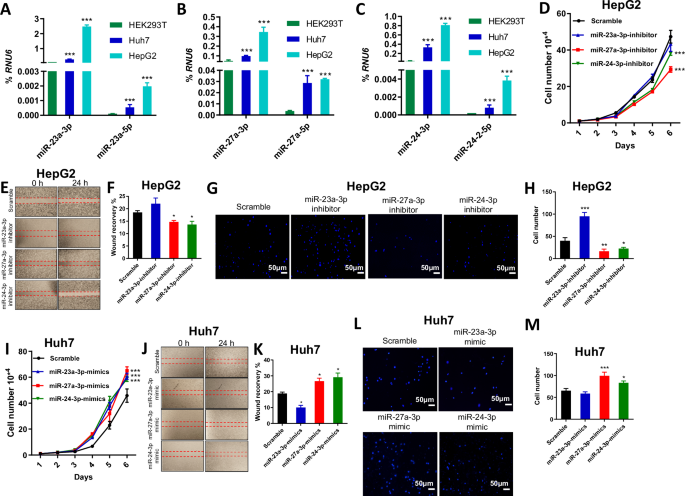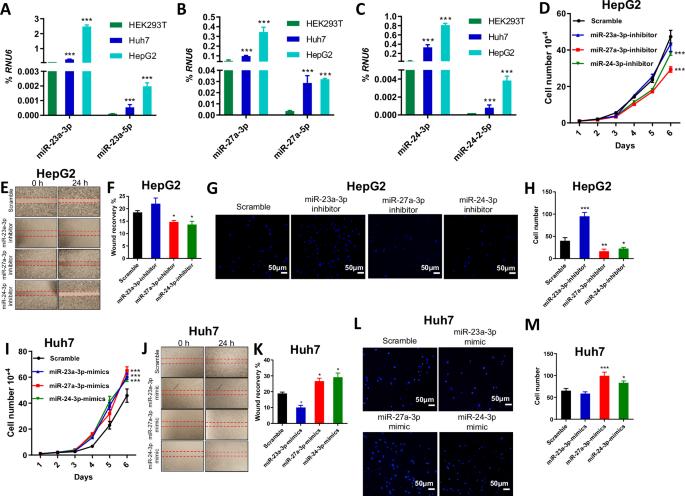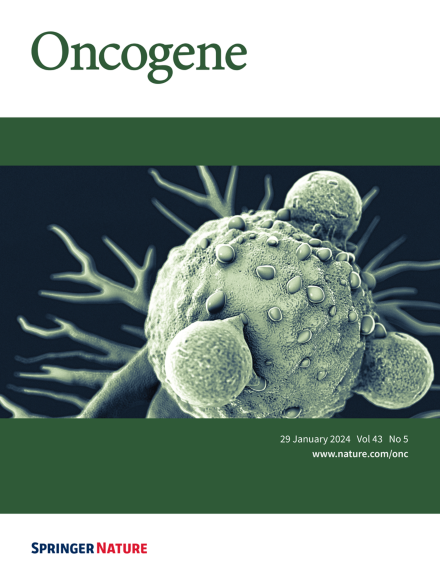CRISPR-based dissection of microRNA-23a ~ 27a ~ 24-2 cluster functionality in hepatocellular carcinoma
IF 6.9
1区 医学
Q1 BIOCHEMISTRY & MOLECULAR BIOLOGY
引用次数: 0
Abstract
The miR-23a ~ 27a ~ 24-2 cluster, commonly upregulated in diverse cancers, including hepatocellular carcinoma (HCC), raises questions about the specific functions of its three mature miRNAs and their integrated function. Utilizing CRISPR knockout (KO), CRISPR interference (CRISPRi), and CRISPR activation (CRISPRa) technologies, we established controlled endogenous miR-23a ~ 27 ~ a24-2 cell models to unravel their roles and signaling pathways in HCC. Both miR-23a KO and miR-27a KO displayed reduced cell growth in vitro and in vivo, revealing an integrated oncogenic function. Functional analysis indicated cell cycle arrest, particularly at the G2/M phase, through the downregulation of CDK1/cyclin B activation. High-throughput RNA-seq, combined with miRNA target prediction, unveiled the miR-23a/miR-27a-regulated gene network, validated through diverse technologies. While miR-23a and miR-27a exhibited opposing roles in cell migration and mesenchymal-epithelial transition, an integrated CRISPRi/a analysis suggested an oncogenic role of the miR-23a ~ 27a ~ 24-2 cluster in cell migration. This involvement potentially encompasses two signaling axes: miR-23a-BMPR2 and miR-27a-TMEM170B in HCC cells. In conclusion, our CRISPRi/a study provides a valuable tool for comprehending the integrated roles and underlying mechanisms of endogenous miRNA clusters, paving the way for promising directions in miRNA-targeted therapy interventions.


基于CRISPR技术的肝细胞癌microRNA-23a ~ 27a ~ 24-2群功能剖析
miR-23a ~ 27a ~ 24-2 簇在包括肝细胞癌(HCC)在内的多种癌症中普遍上调,这引发了有关其三个成熟 miRNA 的特定功能及其综合功能的问题。利用 CRISPR 敲除(KO)、CRISPR 干扰(CRISPRi)和 CRISPR 激活(CRISPRa)技术,我们建立了可控的内源性 miR-23a ~ 27 ~ a24-2 细胞模型,以揭示它们在 HCC 中的作用和信号通路。miR-23a KO 和 miR-27a KO 在体外和体内都显示出细胞生长的减弱,揭示了它们的综合致癌功能。功能分析表明,细胞周期停滞,特别是在G2/M期,是通过下调CDK1/细胞周期蛋白B的激活实现的。高通量 RNA 序列分析与 miRNA 靶点预测相结合,揭示了 miR-23a/miR-27a 调控基因网络,并通过多种技术进行了验证。虽然miR-23a和miR-27a在细胞迁移和间质-上皮转化中表现出相反的作用,但综合CRISPRi/a分析表明,miR-23a ~ 27a ~ 24-2集群在细胞迁移中具有致癌作用。这种参与可能包括两个信号轴:miR-23a-BMPR2 和 miR-27a-TMEM170B 在 HCC 细胞中的作用。总之,我们的CRISPRi/a研究为理解内源性miRNA集群的综合作用和潜在机制提供了一个宝贵的工具,为miRNA靶向治疗干预铺平了道路。
本文章由计算机程序翻译,如有差异,请以英文原文为准。
求助全文
约1分钟内获得全文
求助全文
来源期刊

Oncogene
医学-生化与分子生物学
CiteScore
15.30
自引率
1.20%
发文量
404
审稿时长
1 months
期刊介绍:
Oncogene is dedicated to advancing our understanding of cancer processes through the publication of exceptional research. The journal seeks to disseminate work that challenges conventional theories and contributes to establishing new paradigms in the etio-pathogenesis, diagnosis, treatment, or prevention of cancers. Emphasis is placed on research shedding light on processes driving metastatic spread and providing crucial insights into cancer biology beyond existing knowledge.
Areas covered include the cellular and molecular biology of cancer, resistance to cancer therapies, and the development of improved approaches to enhance survival. Oncogene spans the spectrum of cancer biology, from fundamental and theoretical work to translational, applied, and clinical research, including early and late Phase clinical trials, particularly those with biologic and translational endpoints.
 求助内容:
求助内容: 应助结果提醒方式:
应助结果提醒方式:


